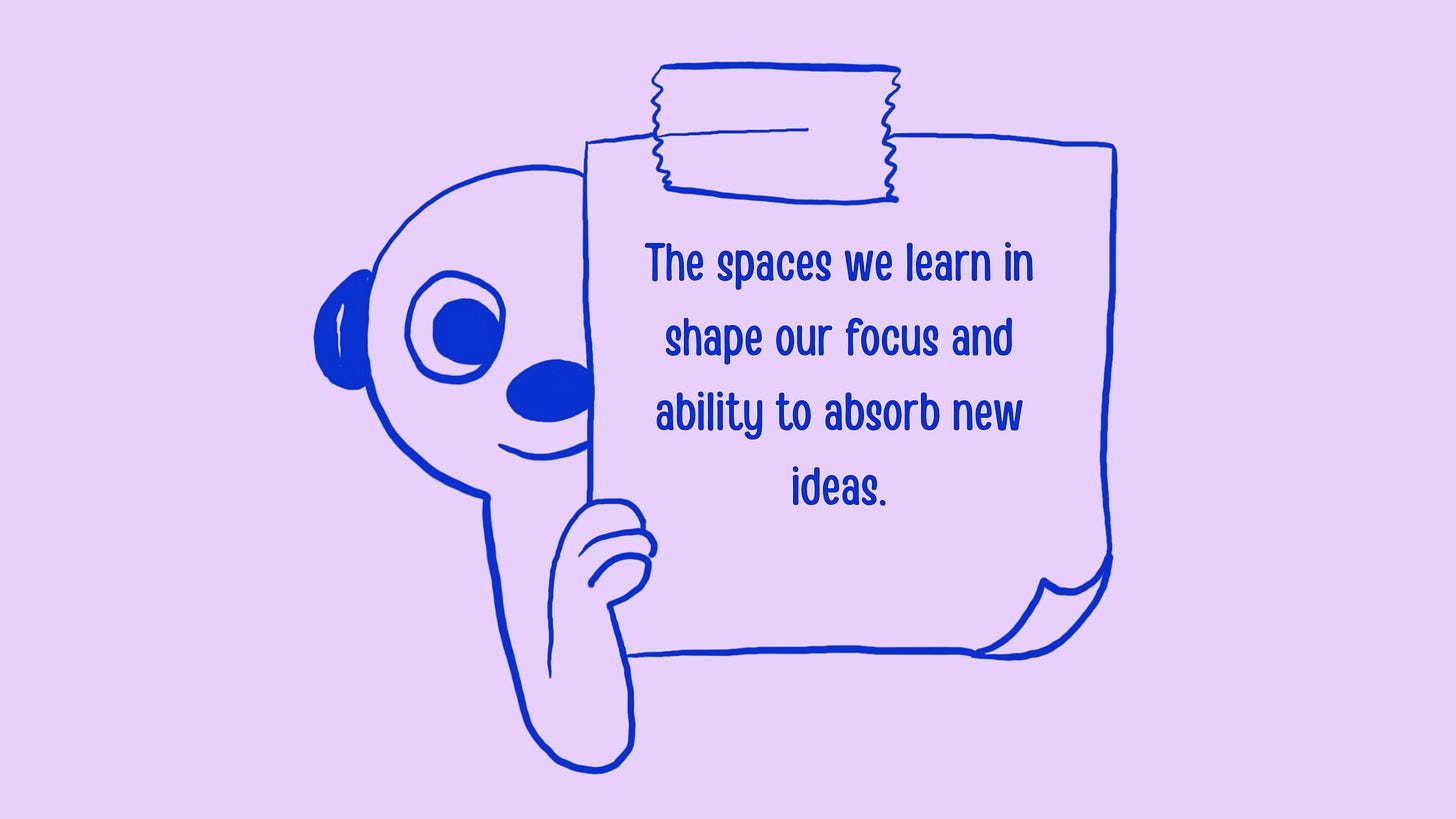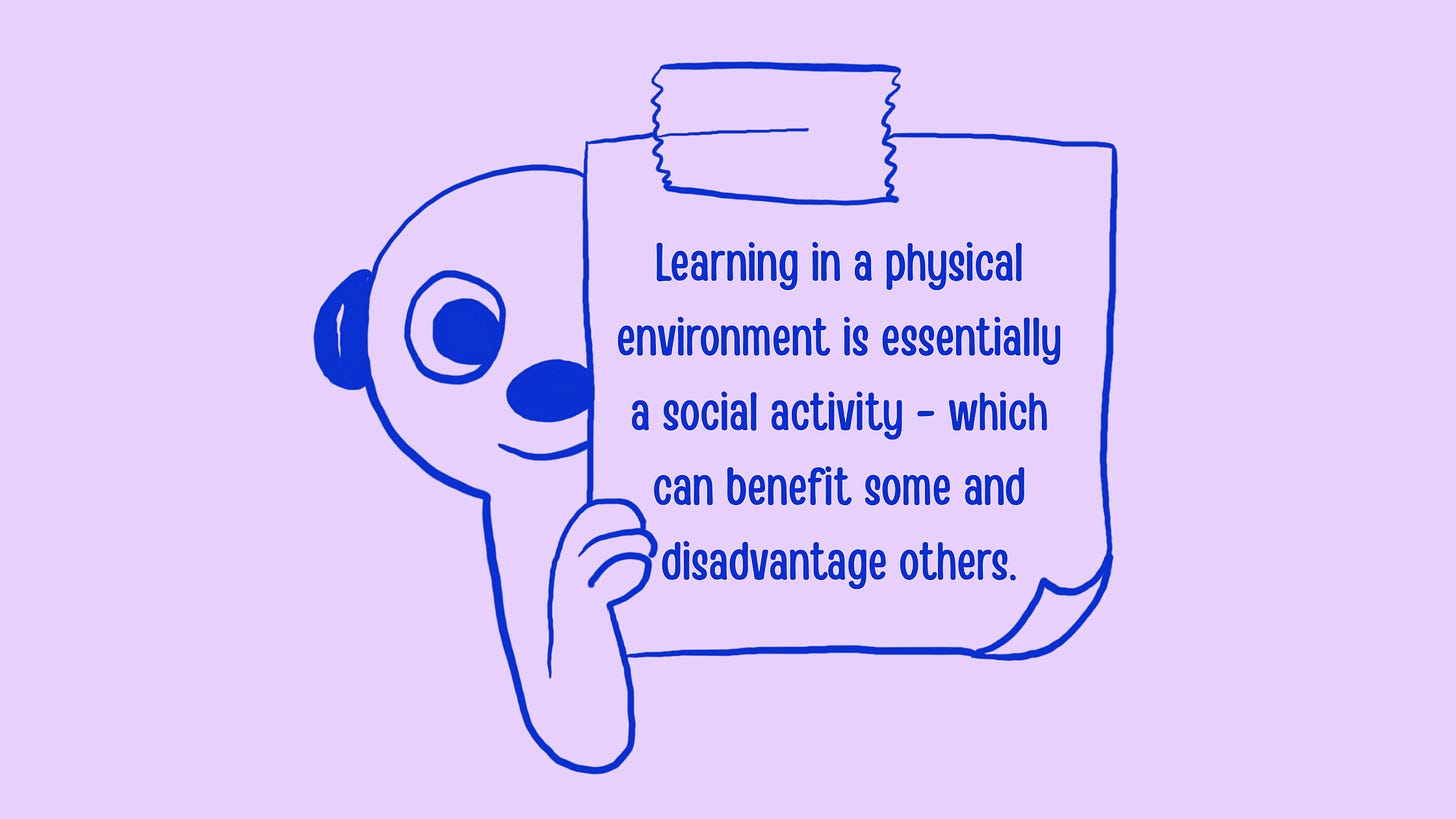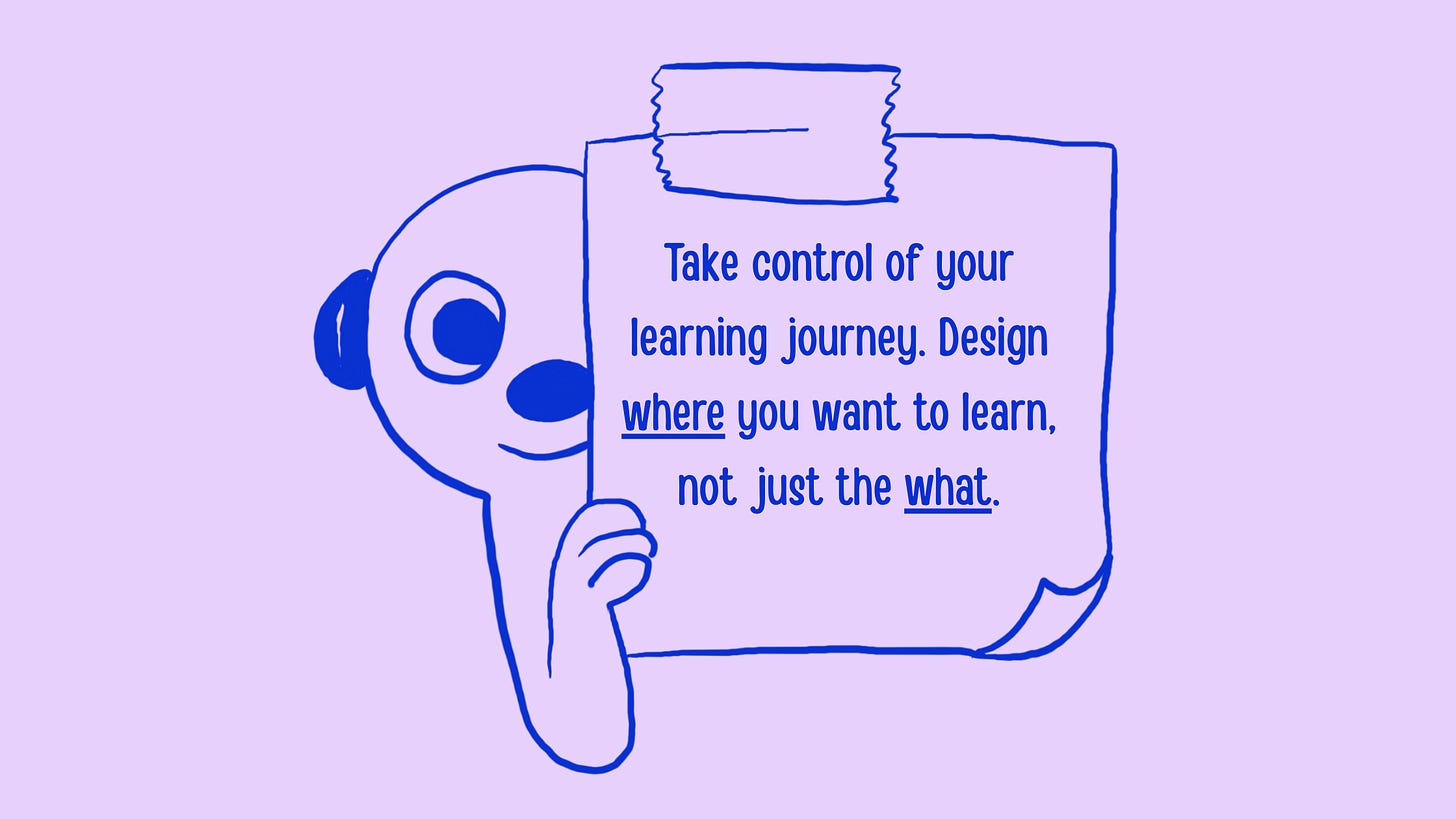Where We Learn Matters
How Spaces Shape Confidence
This afternoon, I overheard two men outside the supermarket catching up. It had been twenty years since they’d last seen each other. As they parted, one shouted back:
“Do you remember when we set fire to the school? Those were the best days!”
Hopefully, they’ve had other “best days” since then. This reminded me of Channel 4’s Educating Yorkshire: some people loved school, others loathed it. For some, school was a place where they felt cared for and safe. For others, it was a hellish experience of sitting still at desks, dodging bullies, and being shouted at by teachers. And for some, the cabbagy-farty-PVA glue aroma was enough to make them vow never to enter a classroom again.
Why “Where” Matters
Our first learning spaces are usually schools. If those experiences were negative, returning to a classroom later—whether to retake compulsory subjects, upskill for work, or learn for personal growth—can feel impossible. The brain links past discomfort with present anxiety, often adding self-limiting beliefs that undermine confidence.
Take Emma, a friend’s daughter. She had to retake English and maths at college. At school, she struggled to focus in noisy classrooms, needing regular breaks. Teachers assumed she was distracted. In reality, the environment overwhelmed her. At college, Emma thrived in the library, completing assignments and earning strong grades. But because her classroom attendance was low, she failed—three times—and eventually gave up. She knew the content but couldn’t demonstrate it in that setting.
Her story shows how where we learn can make or break success.
Why This Post Could Help
If you’re deciding between distance learning and an in-person course, where you learn can be just as important as what you learn. My previous post looked at the “what” factors that influence learning; this one focuses on the “where.” Feeling uncomfortable in your learning environment can feed self-limiting beliefs and knock your confidence—not just in study, but in other areas of life too. This post may also help those supporting someone who’s reluctant to attend school. If the issue isn’t obvious, like bullying, it could be something environmental—noise, distractions, or lack of comfort. Identifying these factors can lead to practical strategies, such as working with teachers to make adjustments that create a more positive space for learning.
Understanding how where we learn impacts us is just as important as what we learn. The spaces we inhabit—whether physical or virtual—shape our focus, creativity, and ability to absorb new ideas. Ultimately, it’s about creating conditions that support growth and make learning more meaningful.
The Impact of Where We Learn
One of the biggest issues related to where we learn can be the feeling of a lack of control. Traditional classrooms dictate noise levels, seating, and teaching style. For anxious learners, this can amplify stress. Working in a school, I am often surprised by how often students request that the overhead lights be turned off. They’d rather work in a half-lit room than have the bright square-shaped fluorescent lights on, which they say saps their energy and focus. Research suggests that environmental factors such as lighting, layout, and comfort can influence academic performance by 10–15%. While that might sound small, for some learners, it can be critical.
Learning in a physical environment is also essentially a social activity. There are interpersonal relationships with teachers and classmates to navigate. Vygotsky’s collaborative and cooperative pedagogical theories demonstrate the importance of peers as a source of knowledge in the classroom. This means we learn not only from interacting with a teacher, but also from other learners. On the flip side, the social aspect of a physical learning space can mean some learners experience forms of social anxiety. My research into why language learners lost their confidence in the classroom found that people can struggle with the pressure to perform well in front of their peers, the fear of negative evaluation, the fear of making mistakes, and the fear of being in the ‘spotlight’ for the wrong reasons. Research in work-related learning environments found that Psychological Safety is a key factor to confidence and success. If a learner feels emotionally safe—accepted, allowed to make mistakes, able to share their ideas without judgement, and able to trust their managers and colleagues to help them achieve their goals —they are more likely to thrive.
Where we learn also dictates how we learn. The learning environment influences not only our comfort but also the way instruction happens. It can determine whether learning is teacher-led, self-paced, self-directed, or adapted to individual cognitive and learning styles. For example, techniques like cold calling—where a teacher calls on a student to answer a question—can create pressure and limit thinking time. Similarly, discussion-based approaches may not suit everyone. Some learners benefit from quieter, reflective spaces, as explored in approaches like Silent Pedagogy.
This isn’t meant to imply that physical learning spaces are terrible places to learn. It comes back to identifying the factors that impact our confidence and finding focused strategies for those specific factors, rather than playing whack-a-mole and feeling like nothing works, so we feel a bit more in control.
Where Should You Learn?
Some helpful prompts to get you started on the best learning journey for you.
Traditional, physical, face-to-face spaces like classrooms or at work
Better for you if you thrive more with:
Structure
Immediate feedback from teachers/ instructors
Social interaction - discussion, group work, meeting like-minded people (adult courses especially)
Not so great if you struggle with:
A one-size-fits-all approach to instruction, pace and content
Distractions caused by noise, lighting, and classmates
Learning in your work environment, and feel like you’re being watched by your manager or colleagues. When taking a training course at work, some people feel guilty about using work time for study and believe they should do it in their own time at home, as it is a ‘privilege’ to be paid to attend a course. Others perceive pressure because they negatively compare themselves to their colleagues. For others, the natural hierarchy of a workplace can be socially sensitive to navigate anyway, so adding academic performance can be too much - learning becomes competitive and more about surviving at work than personal development.
Online Learning
Better for you if you thrive more with:
Flexibility over pace and room for personalisation
Global access - you can have more control over environmental factors, as well as more options to access courses beyond local schools and colleges
Using online communication tools like messaging
Learning in physical spaces you can control
Not so great if you struggle with:
Being alone. Some need interactions and thrive in social learning environments. They also need the accountability of having others see their progress.
Technology. Learning how to use new apps and learning platforms can feel overwhelming, especially when logging on for the first time and finding the discussion board already brimming, the assignment notifications filling the inbox, and a huge resource library to look through.
Communicating online doesn’t suit you, messaging feels distant and waiting for a response is hard. When I taught online, some students felt liberated to participate, as they could use the messaging tool or the ‘raise hand’ tool to signal they wanted to speak. This was much easier than looking around the room, trying to find the right moment to jump into the discussion. Others found it harder: they ended up focusing on how they looked on camera, the breakout rooms felt forced, and there were no opportunities for casual chitchat with their neighbour—every interaction felt like it carried weight rather than a quick check-in.
Design your ideal environment for confident learning
To help you reflect on what type of learning environment works for you, or if you’re struggling with your learning and think the “where” might be part of the problem, I’ve put together this resource to help you think through what’s happening.
Comfort Check
What physical factors help you focus when learning?
Lighting: ☐ Bright ☐ Soft ☐ Natural light
Noise: ☐ Quiet ☐ Background music ☐ White noise
Temperature: ☐ Warm ☐ Cool ☐ Doesn’t matter
Seating: ☐ Desk ☐ Sofa ☐ Standing desk
Extras: ☐ Plants ☐ Cushion ☐ Warm drink
Write down three things that make you feel comfortable when learning:
***
***
***
Write down three things that distract you when learning:
***
***
***
Social Energy
Do you learn best alone or with others?
Circle one:
I thrive in group settings
I prefer quiet, independent work
I need a mix of both
How much interaction do you want?
☐ Regular discussions
☐ Occasional check-ins
☐ Minimal interaction
Control & Flexibility
How much control do you need over your learning environment?
Rate on a scale of 1–10:
1 = I’m fine with any setting
10 = I need full control
Score: ______
What factors do you want control over?
☐ Noise ☐ Lighting ☐ Pace ☐ Break times ☐ Tech setup
Confidence Boost
What makes you feel confident when learning?
☐ Immediate feedback
☐ Time to think before responding
☐ Privacy
☐ Clear instructions
☐ Supportive peers
List two strategies that help you feel safe and supported:
***
***
Where Works Best for You?
Based on your answers to the above questions, tick your preferred option and reflect why:
☐ Face-to-Face Learning
Why? ____________________________________________
☐ Online Learning
Why? ____________________________________________
☐ Hybrid
Why? ____________________________________________
Action Plan
What changes can you make to improve your learning space?
At home: ________________________________________
At work: _________________________________________
Online setup: ____________________________________
Tip: Once you complete this planner, keep it handy when choosing courses or negotiating learning arrangements. Share it with teachers or managers if needed.
Take Control of Your Learning Journey
We can only move forward on our learning journey when we understand what influences us—and what makes it feel harder than it should. Once we identify the challenges we face, we can start finding strategies that make learning feel positive and effective. Recognising these factors is the first step towards creating an approach that truly works for us. And finally, remember you can take control:
Create a personalised learning space: Adjust lighting, seating, and noise.
Combine flexibility with accountability: Join virtual study groups or co-working sessions.
Advocate for choice: Schools and workplaces should offer varied learning environments.
Reflection Cards
To support this post’s theme—Where we learn matters—I’ve created a set of reflection cards designed to help you pause, process, and build confidence.
Each card offers a prompt to explore your learning experiences, build confidence, and reconnect with your motivation. You can print them, stick them in your journal, or screenshot and save them to your phone.


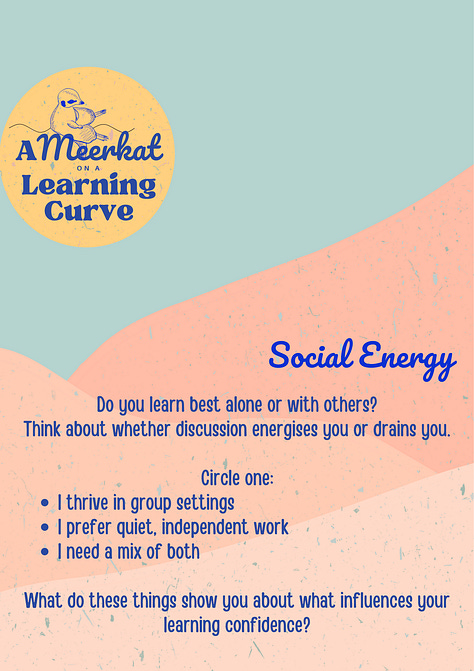
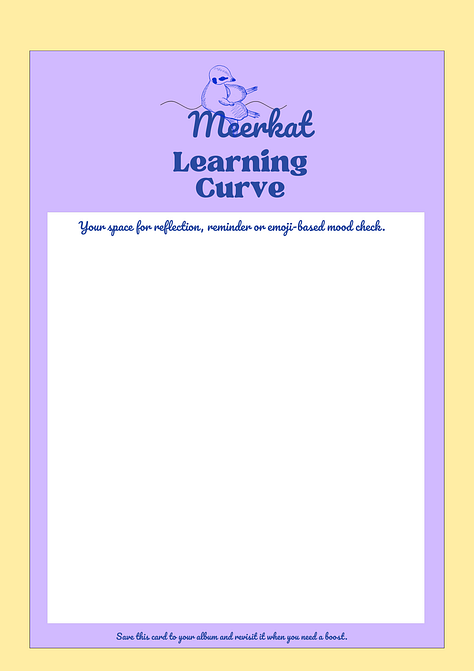
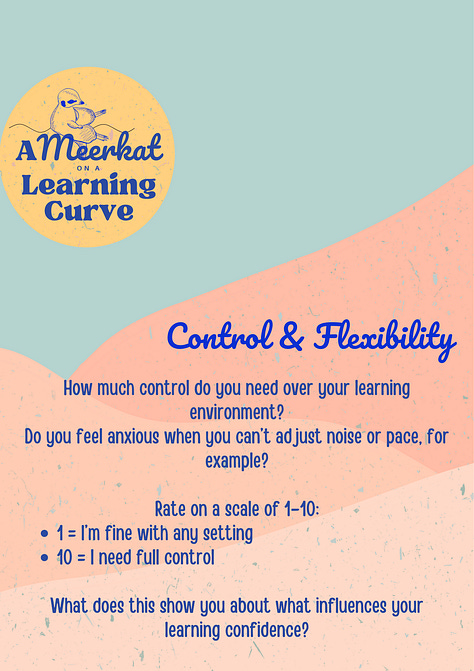
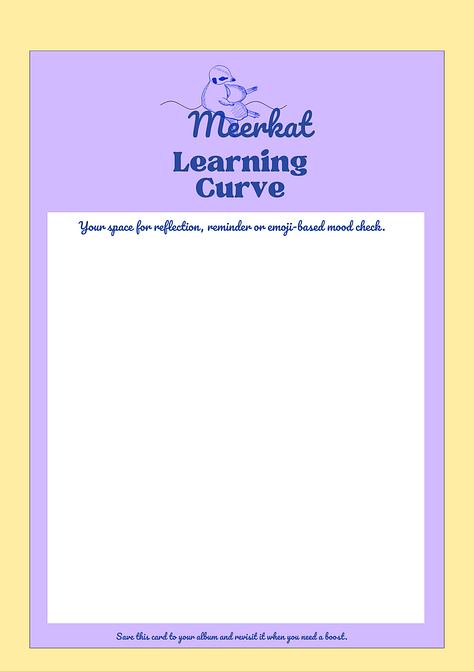

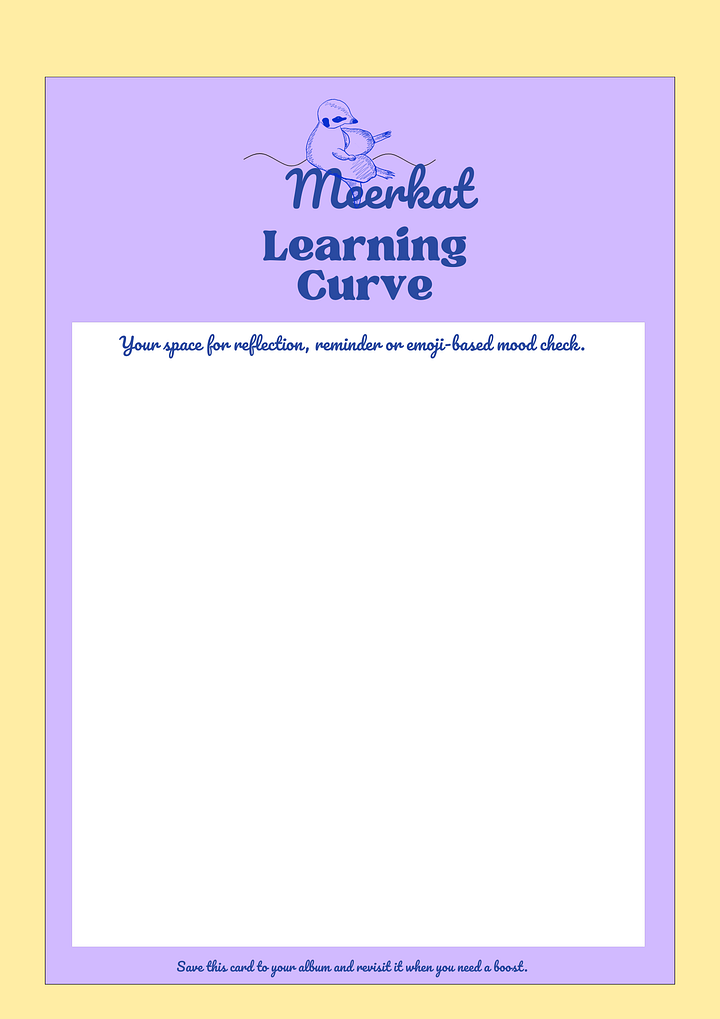
There’s also a short guide to help you use the cards in ways that suit your lifestyle—whether you’re journaling at your desk, reflecting on your commute, or simply taking a quiet moment between meetings.
What Subscribers Get
Motivation and inspiration in your inbox
Access to the full archive
Printable and digital tools, reflection prompts, and activities
Practical strategies for confident learning
A community of learning companions sharing brave leaps and lovely ideas
Whether you’re starting something new, feeling stuck, or just curious about how to learn with more ease and joy—this newsletter is for you.



